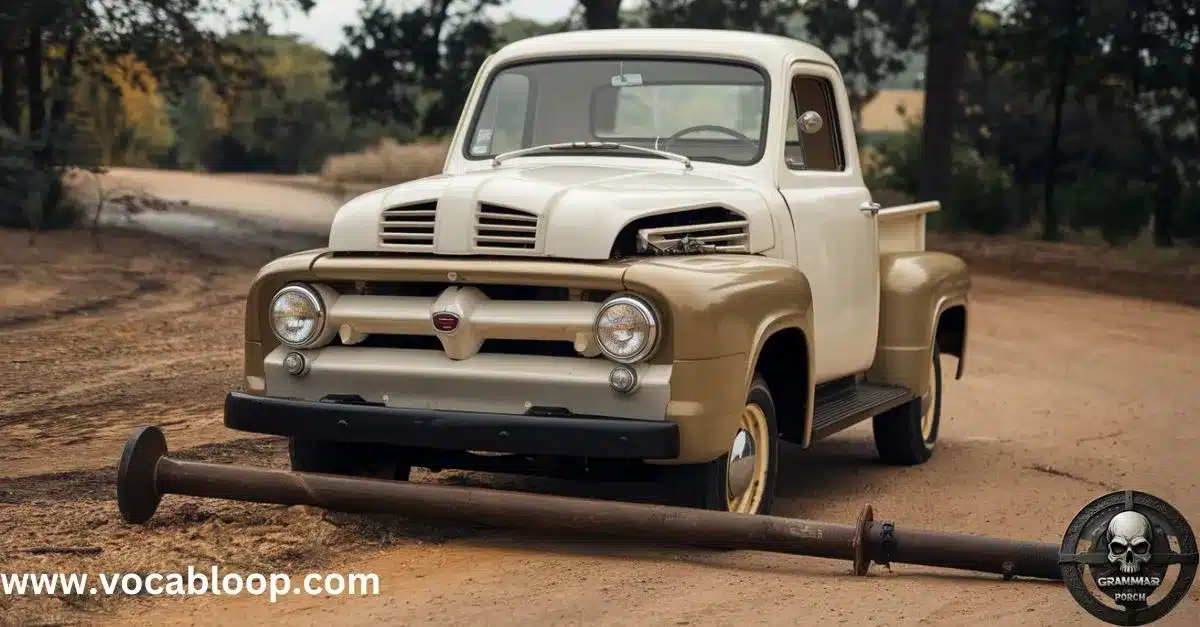When discussing mechanical components in vehicles, the terms “axle” and “Axel” can often cause confusion. While “axle” refers to the crucial part that supports the weight of the vehicle and allows the wheels to rotate, “Axel” may be a name associated with various contexts, including individuals and brands.
Understanding the distinction between axle and Axel is essential for anyone interested in automotive mechanics, as each plays a different role in the world of transportation. In this article, we’ll explore the significance of axles in vehicle design and performance while clarifying any misconceptions surrounding the term “Axel.”
Quick Navigation: First Glance Differences
The distinction between these terms runs deeper than mere spelling. An axle forms the backbone of vehicular movement, while an Axel represents both a namesake and a groundbreaking figure skating achievement.
Consider this comprehensive comparison:
| Aspect | Axle | Axel |
| Primary Definition | Load-bearing shaft for wheels | Figure skating jump/Personal name |
| Industry Usage | Automotive, Engineering, Manufacturing | Sports, Personal identification |
| Technical Classification | Mechanical component | Athletic maneuver |
| Load Capacity | 1,000-20,000 lbs (varies) | N/A |
| Historical Origin | Ancient wheel invention | 19th century skating innovation |
| Professional Standards | SAE/ISO specifications | ISU regulations |
| Common Variations | Drive, Dead, Floating | Single, Double, Triple, Quad |
Deep Dive: Axle

In the mechanical world, axles serve as critical load-bearing components that revolutionized transportation. Modern axle systems incorporate sophisticated engineering principles and advanced materials.
Types of Axles:
- Drive Axles
- Function: Powers wheel rotation
- Components:
- Constant Velocity (CV) joints
- Differential assembly
- Axle shafts
- Load capacity: Up to 20,000 lbs
- Common applications: Passenger vehicles, trucks
- Dead Axles
- Purpose: Weight support only
- Design: Simplified construction
- Cost-effectiveness: 30-40% cheaper than drive axles
- Applications: Trailers, non-powered wheel assemblies
- Floating Axles
- Characteristics:
- Bearing support at both ends
- Enhanced load distribution
- Reduced stress on housing
- Usage: Heavy-duty vehicles, industrial equipment
- Characteristics:
Material Science in Axle Manufacturing:
Traditional Materials:
- Carbon steel (SAE 1040-1050)
- Alloy steel (SAE 4140)
- Forged steel
Modern Innovations:
- Carbon fiber composites
- 40% weight reduction
- 25% increased strength
- Enhanced fatigue resistance
- Titanium alloys
- Superior strength-to-weight ratio
- Corrosion resistance
- Extended service life
Load-Bearing Capabilities:
| Vehicle Type | Typical Axle Load Capacity |
| Passenger Car | 2,000-4,000 lbs |
| Light Truck | 3,500-7,000 lbs |
| Commercial Truck | 12,000-20,000 lbs |
| Heavy Equipment | Up to 50,000 lbs |
Understanding Axel

The Axel jump, named after Norwegian figure skater Axel Paulsen, represents the epitome of technical skating achievement. Let’s explore its complexities:
Anatomical Breakdown of the Axel Jump:
- Entry Phase
- Forward outside edge approach
- Upper body alignment
- Arm positioning for momentum
- Launch Mechanics
- Forward takeoff (unique among jumps)
- Toe pick assistance
- Initial rotation generation
- Aerial Phase
- Minimum 1.5 rotations required
- Core compression
- Air position maintenance
- Landing Elements
- Backward outside edge
- Free leg extension
- Upper body control
Jump Variations:
Single Axel:
- 1.5 rotations
- Base value: 1.1 points
- Average height: 18-20 inches
- Training time: 1-2 years to master
Double Axel:
- 2.5 rotations
- Base value: 3.3 points
- Average height: 24-26 inches
- Success rate in competition: 85%
Triple Axel:
- 3.5 rotations
- Base value: 8.0 points
- Average height: 30-32 inches
- Elite achievement: Only 30% of competitive skaters master this
Technical Corner: Axle Engineering

The evolution of axle engineering represents a fascinating journey through mechanical innovation. Let’s explore the technical intricacies that make modern axles extraordinary feats of engineering.
Advanced Axle Configurations
Independent Suspension Systems:
- MacPherson strut design
- Reduced unsprung weight
- Enhanced handling characteristics
- 15% improved ride comfort
- Multi-link systems
- Precise wheel control
- Optimal camber angles
- Superior road holding
Torque Distribution Technology:
- Electronic differential control
- Torque vectoring capability
- Real-time load adjustment
- Adaptive power distribution
Material Science Innovations
Modern axle manufacturing employs cutting-edge materials:
| Material Type | Strength (MPa) | Weight Reduction | Cost Factor |
| High-Strength Steel | 1200-1500 | Baseline | 1.0x |
| Aluminum Alloys | 400-500 | -30% | 1.5x |
| Carbon Composites | 2000+ | -40% | 3.0x |
| Titanium Alloys | 900-1200 | -45% | 4.0x |
Language and Usage Guide
Understanding the linguistic nuances helps prevent common confusion between these terms.
Pronunciation Guidelines:
Axle:
- IPA: /ˈæk.səl/
- Syllable stress: First syllable
- Regional variations: Minimal
Axel:
- IPA: /ˈæk.səl/
- Syllable stress: First syllable
- Notable variations in skating terminology
Common Usage Contexts:
Professional Documentation:
Axle: Technical manuals, engineering specifications, maintenance guides
Axel: Sports coverage, biographical information, competition records
Real-World Context
Let’s examine practical applications through real-world examples:
Automotive Industry Case Studies
Tesla Model S Dual Motor:
- Front axle: AC induction motor
- Rear axle: Permanent magnet motor
- Combined output: 825 horsepower
- Torque vectoring capability
Heavy-Duty Trucking:
- Meritor’s MT-40 Tandem Drive Axle
- 40,000 lb capacity
- Enhanced efficiency design
- 500,000-mile service interval
Figure Skating Achievements
Notable Axel Milestones:
- 1978: First female triple Axel (Midori Ito)
- 1988: First male quad Axel attempt
- 2022: First quad Axel landed in competition (Ilia Malinin)
Historical Evolution
The parallel development of these terms reflects human innovation in both technology and sport.
Technological Timeline:
Ancient Axles:
- 3500 BCE: First wooden axles in Mesopotamia
- 2000 BCE: Bronze Age improvements
- 1000 BCE: Iron axle introduction
Modern Development:
- 1845: First patent for steel axle design
- 1920: Introduction of floating axles
- 1955: Independent suspension revolution
- 2010: Carbon fiber composite integration
Sporting Evolution:
The Axel Jump Timeline:
- 1882: First Axel jump performed
- 1953: First double Axel in competition
- 1978: First female triple Axel
- 2022: First quad Axel landed
Expert Corner: Q&A
Q: Why are axles critical in electric vehicles? A: Electric vehicles utilize axles not only for support but also for housing electric motors and power delivery systems. Modern EV axles integrate cooling systems and power electronics.
Q: What makes the Axel jump unique in figure skating? A: The forward takeoff distinguishes it from all other jumps, requiring an additional half rotation and exceptional spatial awareness.
Q: How often should axles be inspected? A: Professional mechanics recommend:
- Passenger vehicles: Every 30,000 miles
- Commercial trucks: Every 15,000 miles
- Performance vehicles: Every track day
Reference Section
Technical Standards:
Automotive Axle Standards:
- SAE J544: Axle strength requirements
- ISO 8715: Load capacity testing
- DIN 74056: Assembly specifications
Figure Skating Standards:
- ISU Rule 610: Jump requirements
- Technical Panel Handbook guidelines
- Competition scoring criteria
Conclusion and Key Takeaways
The distinction between axle and Axel represents more than a simple spelling difference – it embodies the diversity of human achievement across mechanical engineering and athletic excellence.
Remember:
- Axles continue to evolve with technological advancement
- The Axel jump pushes the boundaries of human capability
- Both terms represent ongoing innovation in their respective fields
Understanding these differences enriches our appreciation for both mechanical precision and athletic achievement, demonstrating how similar words can represent vastly different aspects of human innovation.

Larry is an experienced blogger with a passion for simplifying grammar. With years of expertise in writing and language, he shares insightful tips on punctuation, synonyms, and the intricacies of English grammar at **Grammar Porch**. His approachable style helps readers improve their writing skills with ease.

